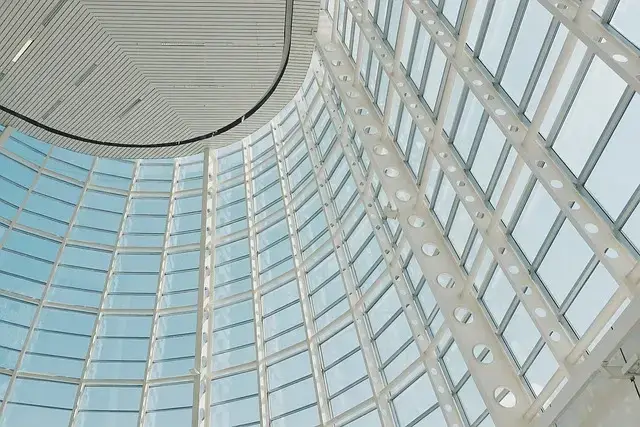The choice of materials is paramount in the expansive domain of building construction. Materials selected don’t just shape the visual appeal of a structure but also its durability and lifespan. Among the many options available, one particularly distinguishes itself—structural steel.
Companies such as Murray Steel Buildings and other reputable firms showcase the vast potential of this material in construction. Through their innovative solutions, they successfully incorporated design and functionality, demonstrating the remarkable benefits of this exceptional material.
With its rise in popularity, it’s worth exploring what factors make it the material of choice for builders and architects. Read on to understand how steel is solidifying its place at the forefront of the construction industry.
1. Unparalleled Flexibility in Design
When it comes to design possibilities, steel offers unmatched versatility. It’s a material you can shape, cut, and mold into almost any form. This adaptability allows architects and engineers to stretch their creativity to its limits.
In the construction industry, the value of adaptability can’t be understated. This is where structural steel shines. It stands as an ideal material for realizing both simple and complex architectural visions. Be it a cozy residential unit or a grand skyscraper, steel is versatile enough to accommodate all design ambitions.
In addition to being versatile, steel fosters creativity. It makes adjustments and modifications possible, even during construction. If a change in design is required midway through the project, steel provides the necessary flexibility. In essence, with steel as your chosen material, you have full control of your design from inception to completion.
2. Durability and Longevity
One characteristic of structural steel that truly stands out is its durability. When investing in a building, you’re looking for a material that can withstand external elements. Steel meets this requirement with its resistance to harsh weather conditions.
Steel structures hold their own whether faced with heavy winds, relentless rain, or burdensome snow. These buildings are designed to withstand harsh conditions, ensuring safety and stability, thus embodying the essence of lasting durability.
Plus, unlike traditional materials such as wood, steel offers immunity to pests. It’s impervious to termites and mold, adding to its durability. In other words, with structural steel, you’re not just building for the present but for the future as well. Its longevity ensures that your investment will stand the test of time.
3. Sustainability and Recyclability
In an industry where environmental consciousness should take center stage, structural steel brings an impressive perk of sustainability. Steel isn’t a use-it-and-throw-it-away material. In fact, it’s among the most recycled materials worldwide, significantly reducing adverse environmental impact.
Once a steel-constructed building has served its purpose, the material doesn’t go to waste. It can be recycled and used again, making it an excellent choice for eco-conscious building projects.
So, when you choose steel, you select a material that aligns your building to a more sustainable future. Plus, the process of recycling steel requires less energy compared to producing new steel. This further reduces its environmental impact.
4. Cost-Effective Construction
In construction, both initial and long-term costs significantly affect material selection. In this aspect, structural steel excels by providing cost-effective solutions. Prefabricated steel components streamline the construction process, helping you save on labor costs and reducing the project timeline.
Factory-made steel parts fit together seamlessly, eliminating the need for time-consuming on-site adjustments. This precision translates into faster construction times, which means you can complete your project and use the building sooner. The reduced time frame also minimizes disruption to the surrounding area.
Additionally, structural steel’s durability results in lower maintenance costs over time. Unlike traditional building materials, it doesn’t require treatments for mold, pests, or decay. In the long run, the durability of steel significantly cuts down maintenance expenses, ensuring your building remains a cost-effective investment for years to come.
5. Safety and Fire Resistance
One of the amazing attributes of structural steel lies in its commitment to safety. Steel is a non-combustible material, which means it doesn’t catch fire easily. In the unfortunate event of a fire, a steel-framed building is more likely to contain the blaze, protecting people and properties.
Structural steel also boasts high structural integrity. It doesn’t warp, buckle, or collapse easily, even under extreme conditions. The strength of steel provides inherent resistance to earthquakes, making it a solid choice in seismic zones. When safety is your priority, steel delivers.
On top of this, steel’s inherent fire resistance can lead to lower insurance costs. Many insurance companies offer more favorable terms for steel structures, recognizing their resilience. This means that opting for a steel building not only provides safety but also has potential financial benefits.
Conclusion
Choosing the right construction material is a task that balances aesthetics, function, and cost. While several options may attract your attention, steel makes a compelling case. From design flexibility to impressive durability, it’s a material that speaks volumes of practicality and performance.
In the end, whether you’re an architect, a builder, or someone looking to invest in a construction project, considering structural steel means aligning with innovation, sustainability, and resilience. It’s a choice that shape structure and promises a future of enduring excellence.
